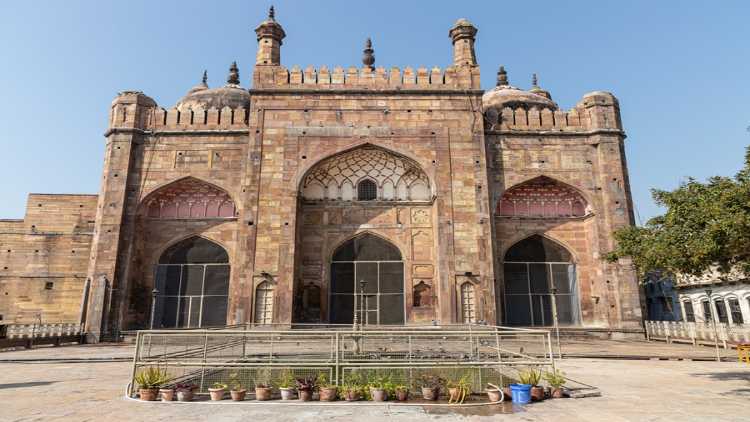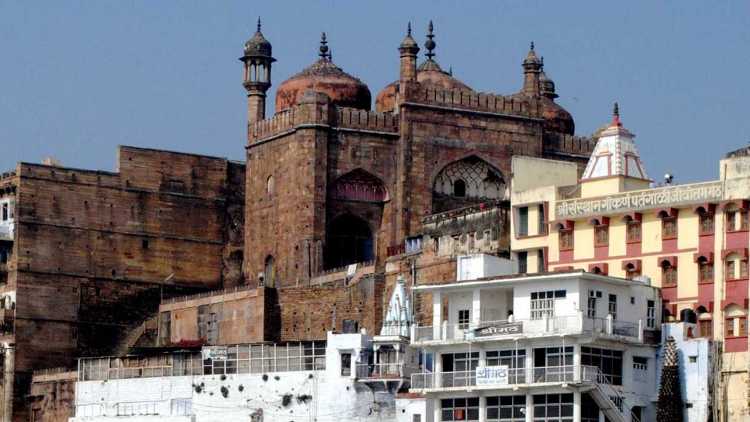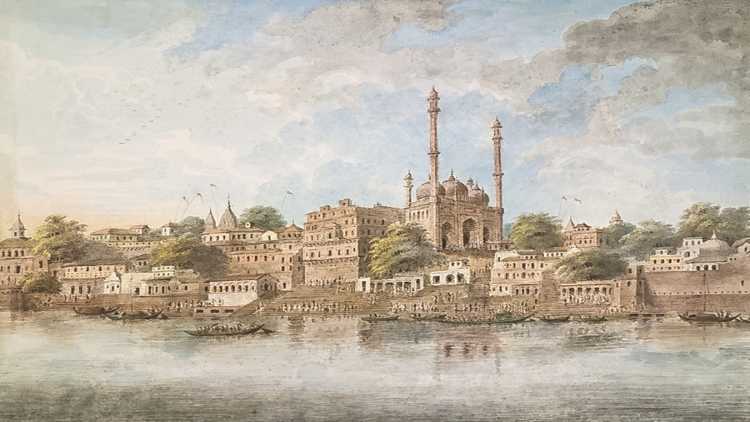
Ghaus Siwani/ New Delhi
In the middle of myriad temples and the Ganges flowing by the side of the most ancient living city in the world, Banaras, stands a mosque that is known for its history and unique architecture and it completes the picture of incredibly inclusive India.
Being looked after by the Archaeological Department, the Alamgir mosque is not open to devotees for offering Namaz.
Masjid-e-Alamgir is located on the banks of the Ganga in the city that goes by the names of Kashi, Varanasi and Banaras, It can be easily reached by boat through the river, but it is difficult to reach it through the winding streets like the labyrinths.
There are dozens of temples around the mosque.

The Alamgir mosque alongside temples
While millions of Hindus come to Banaras every year for taking the holy bath on special occasions, tourists from all over the world visit to see the ancient city and this also brings valuable foreign exchange to India.
Banaras has been the cradle of Indian civilization and culture for centuries. When the famous Urdu poet Mirza Ghalib visited the city he wrote a composition in its praise
Ghalib called Banaras 'Kaaba of India.'
The Alamgir mosque is a small mosque built by the Mughal Emperor Aurangzeb Alamgir and yet it’s one of the finest monuments of the Mughal period and an Islamic architecture.
The mosque is technically unique. It gives a sense of the magnificent art of that period. Special attention has been paid to the artistic points in the construction of the mosque. This mosque is also known as Dharhara Mosque. The decorative flower petals on the walls of the mosque look very attractive.

A painting og Alamgir mosque
The beauty of the mosque was enhanced by its four minarets that are crumbling. One tower collapsed in 1956 and the other in 1958.
The high minarets of the mosque were described by Bharatindu Harish Chandra as the two arms of Banaras. He wrote that "these minarets of the mosque are two hands of Banaras, both hands are raised and asking for bounties in prayer".
According to historical records, before the mosque was built, King Aurangzeb Alamgir used to offer prayers at this place. It was built in 1663 and then its name was Dharhara. Built on a large platform at Panchanga Ghat, the construction of the dome of the mosque shows the levels of architecture of that period.
A lot of effort has gone into decorating every part of the mosque. From the dome to the walls is a great example of craftsmanship. The workmanship on the inside of the roof of the mosque is special in itself.
There was a small pool in the courtyard with a fountain in the middle. The fountain in the courtyard must have been a great scene in the past. Today, however, it is completely lost to the forces of nature.
The city's splendour and the mosque's 174.2-foot-tall minaret is now visible only in old photographs. Although this building is in front of us today, future generations may not be able to see it because it is in a dilapidated condition and is not being maintained properly.
